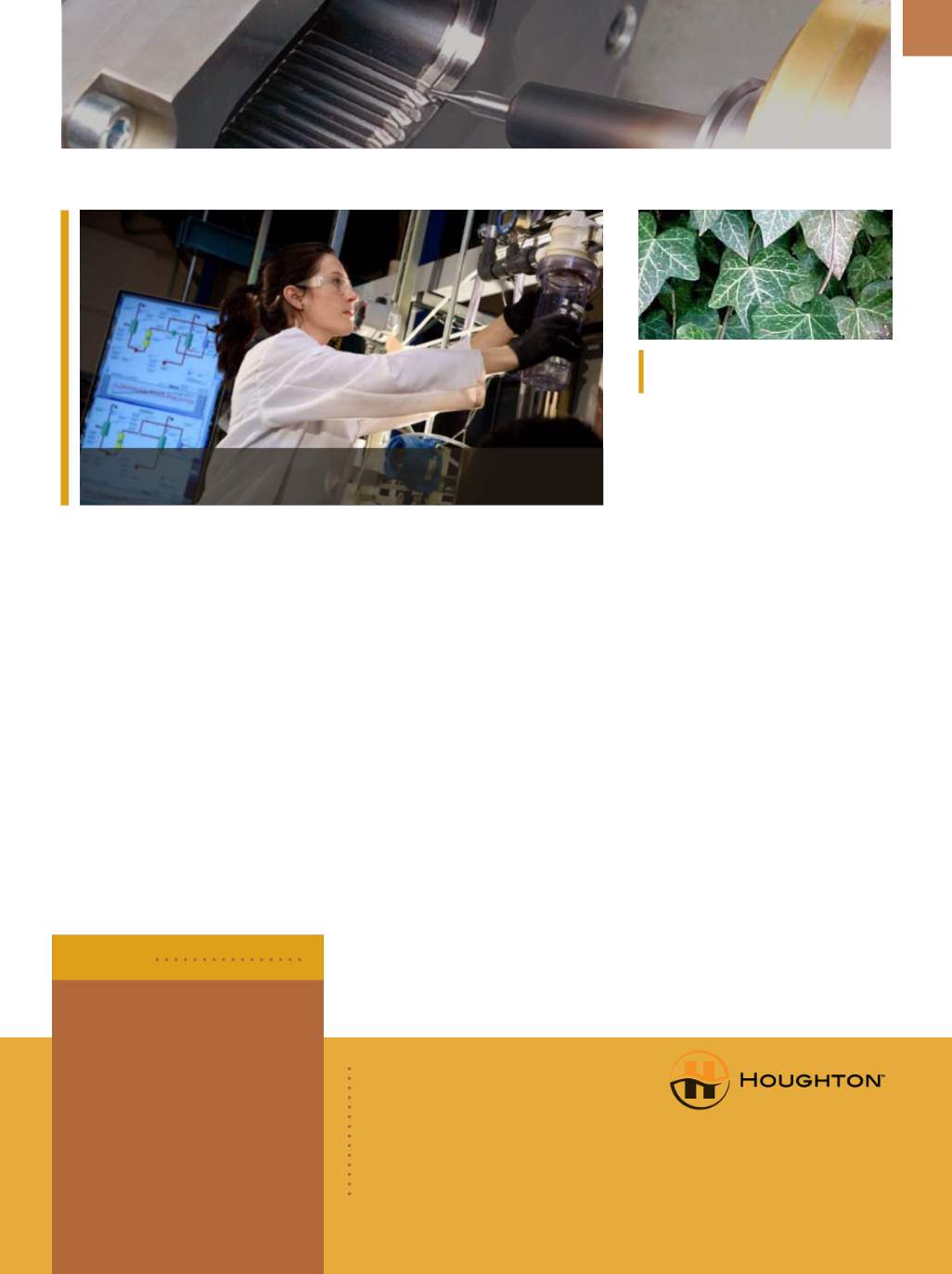

A D V A N C E D
M A T E R I A L S
&
P R O C E S S E S |
S E P T E M B E R
2 0 1 6
1 3
Savannah Bachman explores potential retrieval of rare earth elements fromwater
used in oil and gas production.
RECOVERING RARE EARTHS
FROM INDUSTRIAL WATER
Researchers from the University
of Wyoming (UW), Idaho National Lab-
oratory (INL), and the U.S. Geological
Survey (USGS) are investigating wheth-
er rare earth elements can be recov-
ered from the high-temperature fluid
byproducts associated with energy
extraction. In recent years, demand for
rare earths has increased—and so has
their cost—stimulating interest in new
recovery methods. The UW-INL-USGS
collaboration is one of four groups to
receive $4 million from the U.S. DOE to
determine the feasibility of obtaining
these critical materials from the by-
products of oil and gas production and
geothermal projects.
English ivy secretes one of the most
powerful glues found in nature.
The team aims to develop a data-
base of rare earth elements and trace
metals from oil and gas-produced wa-
ters from some of the nation’s most
prolific hydrocarbon basins, identify
similar oil and gas reservoirs, and cre-
ate a mathematical screening tool to
test national geochemical databases.
UW researchers recently demonstrated
an accurate method to measure rare
earth concentrations in highly saline
fluids, paving the way for the current
research.
uwyo.edu, inl.gov, usgs.gov.
BIOADHESIVE PROCESS
REVEALED
Researchers at The Ohio State Uni-
versity, Columbus, discovered the mech-
anism at work behind one of the stron-
gest adhesives in nature—glue used by
English ivy to cling to walls and trees,
which is powerful enough to withstand
a hurricane. Examining this glue with
an atomic force microscope revealed
previously
unknown
nanoparticles,
which are composed primarily of arab-
inogalactan proteins. “When climbing,
ivy secretes these tiny nanoparticles that
make initial surface contact,” explains
Mingjun Zhang, professor of biomedical
engineering. “Due to their high uniformi-
ty and low viscosity, they can attach to
large areas on various surfaces.”
Investigating further, Zhang and
his team found that the driving force be-
hind the glue’s curing process is a calci-
um-mediated interaction between these
proteins and pectin in the gelatinous liq-
uid that oozes from the ivy as it climbs,
finding its way into openings invisible to
the naked eye. After the moisture evap-
orates, a chemical bond forms. To con-
firm their discovery, scientists used the
nanoparticles to reconstruct a simple
glue that mimics ivy adhesive.
Understanding the proteins that
give the glue its strength could lead to
new adhesives for medical and indus-
try products, according to Zhang, who
foresees bioadhesives that could aid in
wound healing. Others, notably the U.S.
military, are interested in surface-coat-
ing applications that could strengthen
armor systems.
osu.edu.
L&S Machine Co. LLC,
Latrobe,
Pa., received ISO 9001:2008 and
AS9100C accreditation for the
manufacture and fabrication of
build
‐
to
‐
print metal and phenolic
parts. The certifications apply to
the company’s precision machin-
ing, welding, waterjet cutting, and
electrical discharge machining as
well as prototyping and inspection
services.
lsmachineco.com.
BRIEFS
Houghton International Inc.,
Norris-
town, Pa., acquired the metalworking
fluid and industrial lubricant manufac-
turer
Wallover Enterprises,
Strongsville, Ohio. Wallover supplies indus-
trial markets throughout the U.S. and Canada and provides technical
expertise in electrical discharge machining fluids and cold rolling oils for
stainless steel.
houghtonintl.com.
PROCESS TECHNOLOGY


















